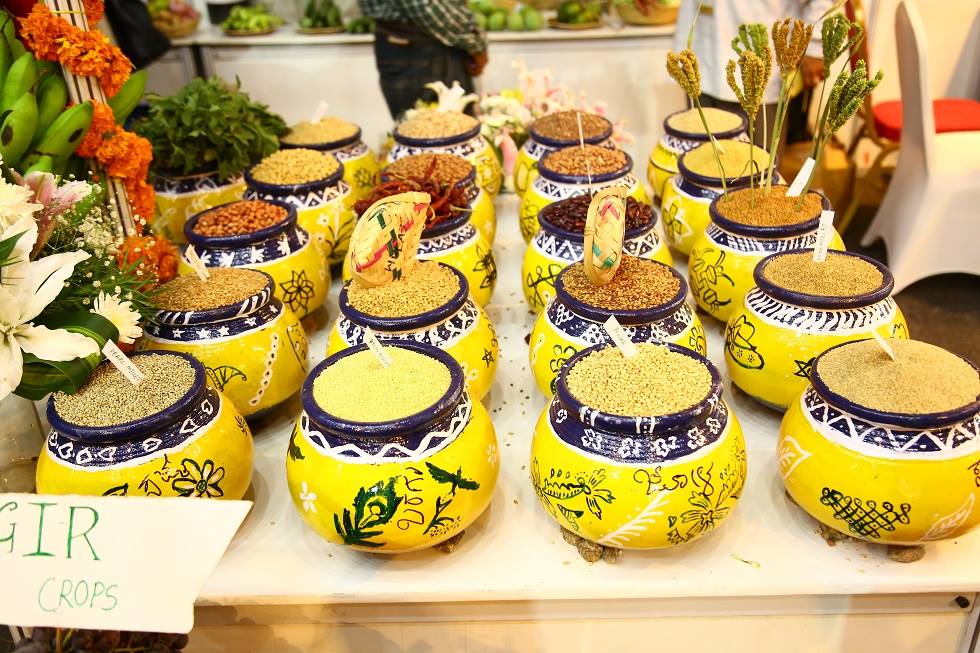Dharwad College’s Initiative Spurs Students to Eat Millets & Earn Money From It Too!
The latest entry of institutions adopting healthier food habits with the inclusion of millets in their menu is the University of Agricultural Sciences (UAS) in Dharwad, Karnataka.

With the onslaught of incessant droughts and crop failures leading to a steep rise in the number of suicides, the last couple of years have been quite harsh for farmers across India.
In a bid to bring down this unfortunate statistic and help farmers with better crop alternatives that would sustain their livelihoods even during the worst climatic conditions, the Indian government decided to zero down upon millets, the dietary staple that was once central to the subcontinent.
Currently being touted as the next best superfood, packed with nutrition, high in fibre and free from gluten, along with the phenomenal ability to survive and withstand droughts, India has been tapping into the potential of this crop and encouraging citizens and institutions to include it in their diet.
In fact, this year took off with the centre declaring 2018 as the National Year of the Millet and as we see more and more millet-based restaurants and food products coming up across cities and towns, government agencies and educational institutions are in no way behind.

The latest entry of institutions adopting healthier food habits with the inclusion of millets in their menu is the University of Agricultural Sciences (UAS) in Dharwad, Karnataka.
“We had a few reasons to introduce millet in the mess of the hostel. These days, due to consumption of junk and unhealthy food, everyone suffers from diabetes, cholesterol and other heart-related diseases. With the introduction of millet in meals, it will help students stay away from these diseases. We also plan on continuing this tradition and introducing millet in meals of upcoming batches of students as well,” said Dr RR Patil, Directorate of Extension and Director, SAMETI (North), UAS, to Edex Live.
So, the students get to have at least one meal per day that is made from millets—be it breakfast, lunch or dinner. This includes dishes like ragi malt, millet upma, jowar roti and jowar khichdi.
While it takes time for one to get used to the taste of millet, the University believes that students are the best target audience for the superfood to become more mainstream. They would then encourage their parents, and the message gradually spread.
Moreover, introducing healthy eating habits among students hasn’t been the only goal of UAS.
You may also like: Through Schools and the PDS, the Humble Millet Is Battling India’s Health Problems
“We encouraged millet cultivation because it can grow in less fertile regions without the use of chemical fertilisers. We also wanted to encourage farmers to take up organic farming. Millets are even resilient to climate change. However, there are very fewer takers for millet in the market. This is because there are only a few millet-processing units in Tier II cities. The picture here is not like Bengaluru, where techies accept changes that are for the good,” Dr Patil explained.
To help farmers, UAS took a step forward by starting a millet-processing unit in their campus this September, which allows farmers to process about two tonnes of millet per day at a nominal charge.
Interestingly, the Food Science and Nutrition Department of UAS has also been running a programme called experiential learning for undergraduate students for almost a decade now, under which students voluntarily prepare value-added products made of millets and sell them by setting up weekly stalls.
Their product range includes nippattu, chakali, millet cookies, ragi cookies, millet-based food mixes for sports enthusiasts and millet flours for chapati, among others. “This way, they are able to earn an income, promote millet and gain experience in the food industry,” added Dr Patil.
(Edited by Shruti Singhal)
Featured Image Source: Wikimedia.
Like this story? Or have something to share?
Write to us: [email protected]
Connect with us on Facebook and Twitter.
If you found our stories insightful, informative, or even just enjoyable, we invite you to consider making a voluntary payment to support the work we do at The Better India. Your contribution helps us continue producing quality content that educates, inspires, and drives positive change.
Choose one of the payment options below for your contribution-
By paying for the stories you value, you directly contribute to sustaining our efforts focused on making a difference in the world. Together, let’s ensure that impactful stories continue to be told and shared, enriching lives and communities alike.
Thank you for your support. Here are some frequently asked questions you might find helpful to know why you are contributing?


This story made me
-
97
-
121
-
89
-
167











